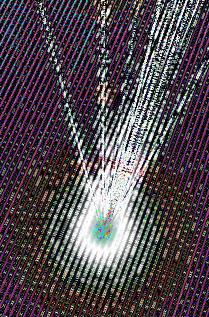Quantum security steps ahead
 Not even world leaders can protect themselves from cyber-attacks these days, but quantum computing could help.
Not even world leaders can protect themselves from cyber-attacks these days, but quantum computing could help.
The world needs more and more information security as the use of digital technologies for communication, financial transactions and information storage grows.
Existing encryption methods are breakable, and hacking attacks are becoming more sophisticated and more frequent.
Quantum computers – using information encoded into photons – are widely considered to be the next big boost in computation power and information security.
There are a number of factors that make quantum encryption extremely exciting, but they all require suitable quantum emitters.
Emitters are the quantum equivalent of the bits used to present digital information, and there are experts around the world trying to improve these solid-state platforms that can generate those single pulses of light.
Associate Professor Igor Aharonovich and Professor Milos Toth, photonics researchers at University of Technology Sydney, in collaboration with scientists at MIT, have now discovered some of the brightest quantum emitters ever recorded.
They were spotted in hexagonal boron nitride (hBN); a honeycomb structure that mimicks graphene. Instead of carbon atoms, however, it is an alternating array of boron and nitrogen atoms.
Traditionally, the material is used as a lubricant with no technological value.
But it appears that the emitters in hBN can operate at different frequencies, making them tuneable over a large spectral range.
They can also be easily engineered using conventional methods, and remain robust in harsh environments.
Just like a lot of big things in technology, this idea will be limited to the lab for a while.
In its collaboration with MIT, the Materials and Technology for Energy Efficiency group at UTS is working at the frontier of studying these light emitters and revealing their ultimate properties.
The same collaboration had already yielded the identification of ultra-bright emitters in silicon carbide; a technologically mature platform commonly used as LEDs and detectors since the 1980s.
Both works mark a major turning point in the world of ultra-bright quantum emitters. To date they have been confined mostly to systems that either require cryogenic temperatures or are not available commercially on an integrated chip platform.
Identifying single emitters is of course only the beginning. Scalability and integration are key, so the UTS and MIT teams say they will continue to push to make their pure science into usable technology.
“These discoveries can easily bring quantum photonic technologies on to a single chip and onwards to a commercial world,” says Associate Professor Aharonovich.
The hBN study is accessible here, and the silicon carbide paper here.







 Print
Print